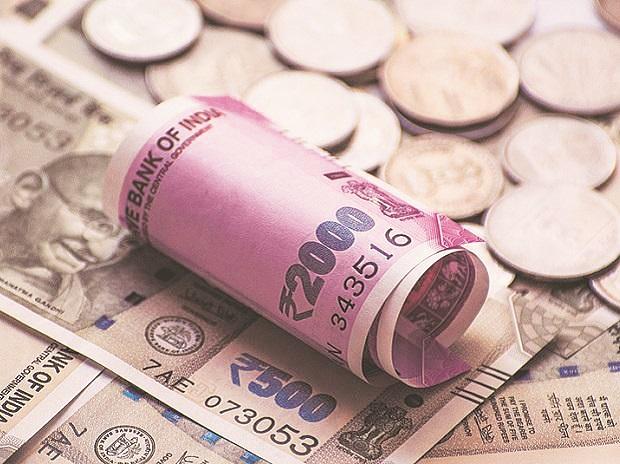[ad_1]
A structural change in the liquidity landscape brought about by much lower surplus cash and booming credit growth has resulted in a surge in banks’ reliance on short-term funding avenues in the current financial year.
Reserve Bank of India (RBI) data shows that in the current financial year, so far, bank borrowings have averaged Rs 4.2 trillion, against Rs 2.6 trillion in the previous financial year. The RBI’s data reflects fortnightly changes and the latest data shows the outstanding bank borrowing as on February 24.
Given that liquidity conditions are seen tightening significantly in the latter half of March, bank borrowings in the remaining two fortnights of this financial year are likely to stay elevated.
Moreover, with the RBI’s efforts to withdraw monetary accommodation leading to a sharp decline in surplus liquidity, bank borrowings rose past the Rs 5-trillion mark for the first time in September 2022 and remained above that level in October, according to the data.
According to the RBI’s handbook for its statistical supplement, the bank borrowings section represents total borrowings from outside the banking system, apart from domestic borrowings. It also includes loans or borrowings from abroad by banks in India. Borrowings from the RBI are excluded from this item.
Analysts said the figures, which are listed under the ‘borrowings’ section for scheduled commercial banks, largely represent short-term funding routes, such as interbank repo operations and the use of tri-party repos. Issuances of instruments such as additional tier-1 bonds and infrastructure bonds are also included, they said. Certificates of deposits, however, are not.
“Basically, one portion of the borrowings was infrastructure and other bonds — that was roughly Rs 50,000-60,000 crore on a net basis. Other than that, short-term borrowings from the interbank market and other means of short-term borrowings are what is being reflected here,” Soumyajit Niyogi, director, India Ratings & Research, told Business Standard.
“When credit growth is robust and sustainable, the way it is, banks will eventually have to look for a stable solution, such as higher deposits. They cannot lend on the basis of short-term borrowings. Long-term borrowings, such as bonds, are fine, but short-term borrowings cannot be practised on a sustained basis,” he said.
Analysts flagged the persistence of the wide gap between bank credit growth and deposit growth, pointing out new factors that could have contributed to the phenomenon.
“Credit growth doesn’t seem to be letting up and the kind of deposit growth that you would expect in a rate hike cycle hasn’t happened. It could be because of disintermediation. People could be looking at alternative sources of savings. Also, the transmission to deposit rates has been slower. The data matches up with this narrative,” said Sakshi Gupta, principal economist, HDFC Bank.
“These are smaller duration borrowings, so banks are basically tiding over mismatches to meet liquidity requirements. It is clearly a reflection of the system liquidity numbers and the amount that it has reduced from April onwards to now,” she said. As on February 24, bank credit growth was at 15.5 per cent YoY, much higher than the 10.1 per cent growth in deposits, the RBI data showed.
LIQUIDITY, MARKET RATES
From around Rs 7.4 trillion in April 2022, liquidity surplus in the banking system shrunk to Rs 1.6 trillion in December-January. While there were more daily instances of liquidity deficit in February, a pick-up in government spending resulted in surplus conditions in March, with daily average absorption by the RBI at Rs 53,287 crore, so far, this month. An absorption of funds by the RBI implies excess cash lying with banks.
Strong credit growth, sales of government bonds by the RBI, and the central bank’s interventions in the foreign exchange market have all contributed to the narrowing of liquidity surplus.
In September, when bank borrowings crossed Rs 5 trillion for the first time, the RBI net sold $10.36 billion in the currency market to rein in volatility in the exchange rate. Sales of dollars by the RBI drain out rupee liquidity from the banking system.
The effect of tighter liquidity has been felt in the weighted average call rate (WACR), which is the operating target of the RBI’s monetary policy. As the surfeit of cash has dwindled, the WACR hardened in late 2022 and rose to the upper bound of the interest rate corridor on multiple occasions. This means an increase in short-term borrowing costs for banks.
In 2020 and 2021, banks’ overnight borrowing costs were below the repo rate, with the WACR sometimes dropping as much as 140 bps lower than the benchmark policy rate. It was around July 2022 that the WACR started to sustainably trend above the repo rate, with October and December witnessing episodes where the rate was at or above the Marginal Standing Facility – the upper bound of the rate corridor.
[ad_2]
Source link



